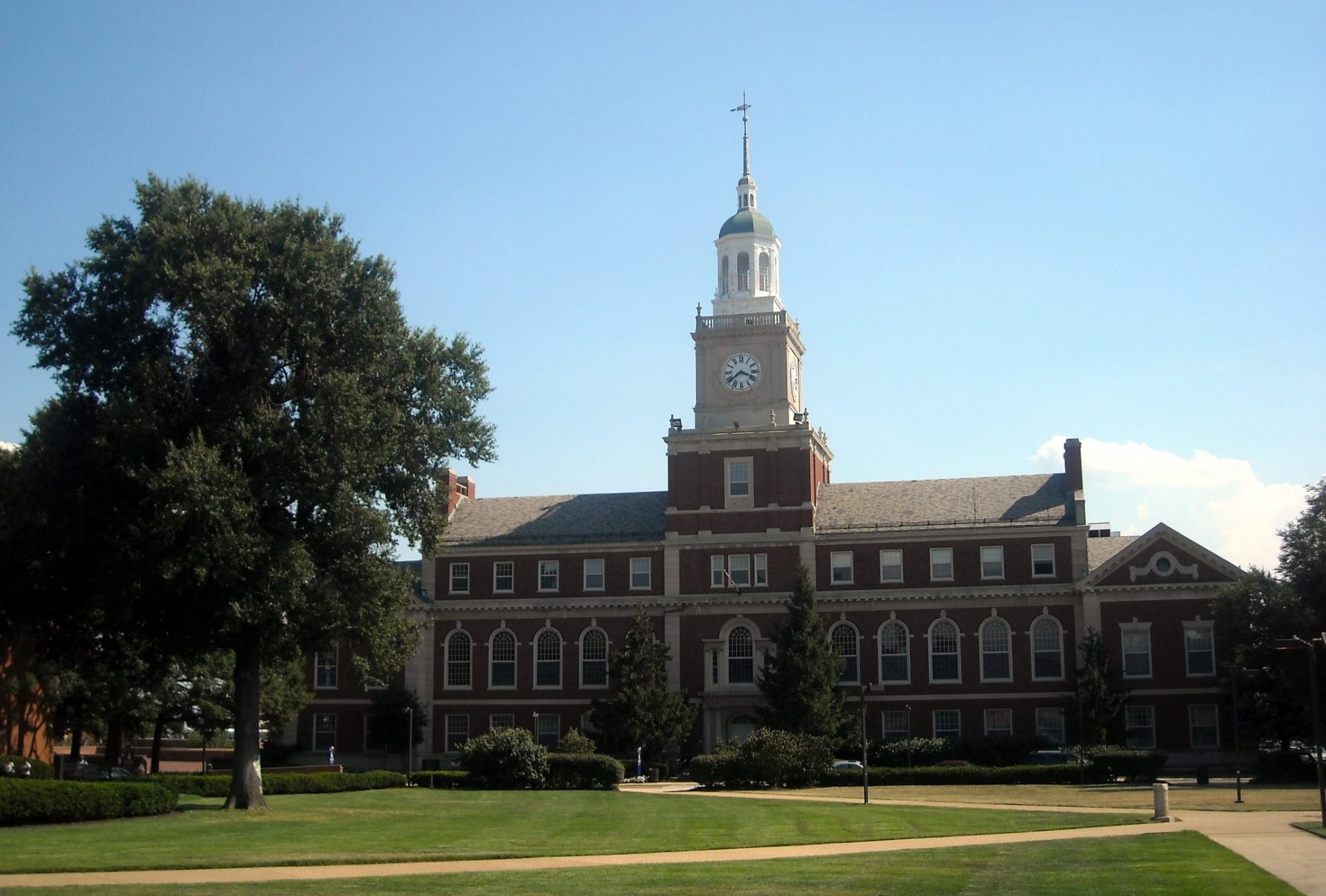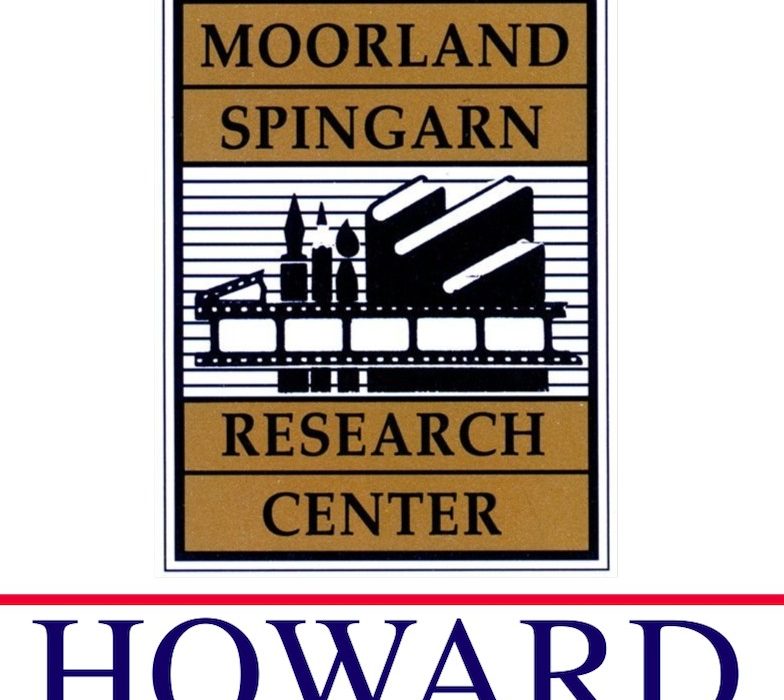Housed on the ground and first floors of Founders Library at Howard University, the Moorland–Spingarn Research Center (MSRC) in Washington D.C. is one of the world’s largest and most expansive repositories for the documentation of the culture and history of people of the Africa Diaspora. Located at 500 Howard Place NW, the MSRC, according to its website, “collects, preserves, organizes and makes available for research a wide range of resources chronicling the Black experience.”

Fundamental to development of the Moorland-Spingarn Research Center, originally known as The Moorland Foundation, was the generous contribution of Rev. Dr. Jesse E. Moorland. An African-American minister from Ohio, Moorland was an alumnus and trustee of Howard University, a historically Black college. He also was the secretary of the Washington, D.C. branch of the Young Men’s Christian Association (YMCA).
Early on, Moorland had begun purchasing, curating, collecting and preserving materials that pertained to Black culture. His work led him to co-found, with Dr. Carter G. Woodson, the Association for the Study of Negro Life and History (ASNLH), currently known as the Association for the Study of African-American Life and History (ASALH). Woodson, who is the second African-American (after W.E.B. DuBois) to earn his doctorate from Harvard University, is considered by many to be the “Father of Black History”.
Moorland was persuaded by Kelly Miller, a highly-regarded Black sociologist and mathematician, to donate his collection to Howard University for its proposed “Negro-Americana Museum and Library.” As a trustee, Moorland understand the significance and urgency of Howard University to organize and oversee the administration of its own library dedicated to African American life and history.
At that time, the contents of Founders Library primarily focused on slavery and abolition. It, according to the “Founders Library and Moorland-Spingarn Research Center, African American Heritage Trail” of Cultural Tourism D.C., included the collections of “Lewis Tappan, a noted abolitionist who organized the American and Foreign Anti-Slavery Society and served as treasurer of the American Missionary Association; and some 70 bound newspapers and several scrapbooks donated by John Wesley Cromwell”.
The library’s resources were greatly expanded with Moorland’s 1915 gift of more than three thousand items. Considered to be one of the most critical collections of Black culture-related materials, his work illustrated African Americans’ efforts to create, collect, document, preserve and disseminate their own culture, including history. This collection at Howard University’s library opened in 1933 and would be collectively known as The Moorland Foundation.
In order to properly organize the contents of The Moorland Foundation, the university’s executive administrator, President W. Mordecai Johnson, promoted librarian Dorothy Porter in 1930 to lead this new foundation. Porter, an alumna of Howard University, was married to James A. Porter, also an alum who taught in the art department at Howard. His research and work led to his promotion in directing the department and art gallery at the university and being regarded as the “Father of African American art history.” However, Dorothy was incredibly qualified to head the organization, and thus, advance Howard University and more importantly, society, in new directions. In 1932, Dorothy Porter, who had earned her Master of Science degree, was the first African-American woman to earn a graduate degree in library science from Columbia University in the City of New York.
In leading the Moorland Foundation as her new assignment, Dorothy Porter looked to the past. She researched and then built upon the work of librarians Lula V. Allen, Edith Brown, Lula E. Connor and Rosa C. Hershaw, all who had worked at Howard University previously.
Dorothy Porter worked diligently to establish sincere relationships with book dealers and publishers in order to further expand the collection on Black culture. She created an international network of connections, which included personal friends such as Langston Hughes, to develop an institution whose contents, including books, linguistic materials, journals and music compositions, were truly global in representation and outreach. Porter arranged for statesmen and scholars of the Africa Diaspora to visit the Foundation in order to provide more accurate representations of their lives. All these were performed with the intent of garnering greater cultural respect, appreciation and inspiration for Africa Diaspora peoples and their contributions.
In 1946, Howard University acquired the private collection of attorney Arthur B. Spingarn, chair of the legal committee of the National Association for the Advancement of Colored People (NAACP). A bibliophile of grand proportions, Spingarn had curated a collection of approximately five thousand volumes called the Negro Authors Collection. In 1958, the Moorland-Spingarn Research Center, as it had become known, purchased the Negro Music Collection of Arthur Spingarn. At that time, this collection was the largest of its kind in the world.
Because the university treasurer wanted an appraisal of the Spingarn collection completed by an external assessor, Dorothy Porter sought an appraiser from The Library of Congress. However, as the appraiser had no experience in dealing with materials on Black culture, he asked Porter to complete the report, which he approved, signed and sent to the treasurer. Her report, another contribution of Dorothy Porter, created the standard in appraising collections of content that centered on Black culture.
Perhaps the greatest professional accomplishment of her forty-three years at the research foundation was her development of a new system to catalog the content of the collections. Electing to classify content by genre and author, Dorothy Porter categorized materials in order to illuminate the massive contributions and pervasive roles of Black people in subject she designated as art, anthropology, communications, demography, economics, education, geography, history, health, international relations, linguistics, literature, medicine, music, political science, sociology, sports, and religion. This new categorization confronted racism and its accompanying propaganda by presenting works by and about Black people within their appropriate areas of accomplishment and academic scholarship. Additionally, Porter developed authoritative bibliographies and diverse tools to enhance research.
Acquiring the collections of Rev. Dr. Jesse E. Moorland and Arthur B. Spingarn led to increased international respect and prestige for the foundation and the university. The foundation would be renamed, in honor of its two primary benefactors, the Moorland-Spingarn Research Center.
In 1973, Dorothy Porter retired and Dr. Michael Winston was appointed as the center’s first director; directors that followed are Thomas C. Battle, Howard Dodson and its current director, Rhea Ballard-Thrower. The collections of the Moorland-Spingarn Research Center were expanded to contain its own Library Division and Manuscript Division. Additionally, the Howard University Museum and Howard University Archives were also created. The museum uses to host exhibits comprised of materials that are contained within the MSRC. The archives hold official documents and items of Howard University, including records, publications, theses, dissertations, university memorabilia and the contributions of alumni to society.
The Library Division builds upon the massive collection of materials, including books, pamphlets and periodicals in numerous languages, that extensively detail the lives of Black people of the Africa Diaspora. In this division, materials, such as rare works by Martin Delaney, Jupiter Hammon, Gustavus Vassa and David Walker and first editions by authors including W.E.B. DuBois, James Baldwin, Wole Soyinka, Chinua Achebe, Toni Morrison and Amiri Baraka, are contained.
The other divisions are primarily involved with development of programming that support the MSRC. The Manuscript Division, organized in 1974, is divided into four departments: Manuscripts, Prints and Photographs, Oral History and Music. The holdings of the Manuscript Division total more than eighteen thousand linear feet. It is centered upon development of institutions, such as The Black Family; organizations, like the Universal Negro Improvement Association; and concepts, including justice and equality, that are integral to the survival and thriving of the Black community. It has in its holdings almost seven hundred collections that include photographs, diaries, letters of correspondence and memorabilia of persons such Mary Church Terrell, Anna J. Cooper, E. Franklin Frazier and Paul and Eslanda Robeson.
The Prints and Photographs Department contains more than 150,000 images, ranging from photographs, drawings, daguerreotypes and postcards to prints, maps, tintypes and sketches.
The Music Department contains collections whose music genres range from spiritual, blues and folk to jazz and classical styles. It contains materials, such as recordings, sheet music and liner notes from more than four hundred composers, dating from the 1700s to the present.
The Oral History Department includes the Ralph J. Bunche Oral History Collection, which contains more than seven hundred transcripts that provide primary documentation of the people and events of the Civil Rights Era. Other collections held in this department center upon various subjects such as African American military history, Black women and Howard University.
In 2013, the MSRC created a digitization program that allows it to preserve and share its contents worldwide, manage the Digital Howard online repository and host the digital collections from the MSRC. Contained within the digital collection are archival materials of Oliver Otis Howard, for whom the university is named, as well as the 6,000 image Negatives Collection.
In 2019, the Moorland-Spingarn Research Center was awarded a $140,000 grant from the Institute of Museums and Library Services (IMLS) of the Museum Grants for African American History and Culture (AAHC). In a press statement from the Office of University Communications at Howard University, the MSRC is one of fourteen grantees awarded by the IMLS, “an independent, federal agency that provides grants to libraries and museum to sustain culture and heritage.”
In the statement, executive director, Rhea Ballard-Thrower, M.I.L.S., J.D., expressed her gratitude and plans for the MSRC, stating “The Moorland-Spingarn Research Center is delighted to receive one of the 2019 Institute of Museum and Library Services grants to strengthen African American history and culture … The MSRC will proudly administer this grant, which emphasizes the significant contributions Black architects have had on the field of design. The IMLS grant will support the MSRC in increasing access to archival collections related to African American history.”
While the grant will enhance the digitization program that supports the collections held at the Moorland-Spingarn Research Center, the focus of the project, according to the statement, “will be the creation of the Archives of African American Architects Digital Collection, drawings and blueprints created by three African American architects.”
Lopez Matthews, Jr. Ph.D., digital production librarian and history subject specialist at Howard University Libraries and the Moorland-Spingarn Research Center added to the discussion. He stated that the project’s completion “will go far to support MSRC’s goal of increasing access to archival collections related to African American history and creating digital copies of our collection to support preservation efforts … (and) it will also help us train African American students for jobs in the field of digital preservation. Throughout their tenure they will develop their archival skills in three areas: document handling, digitization and digital preservation.”
